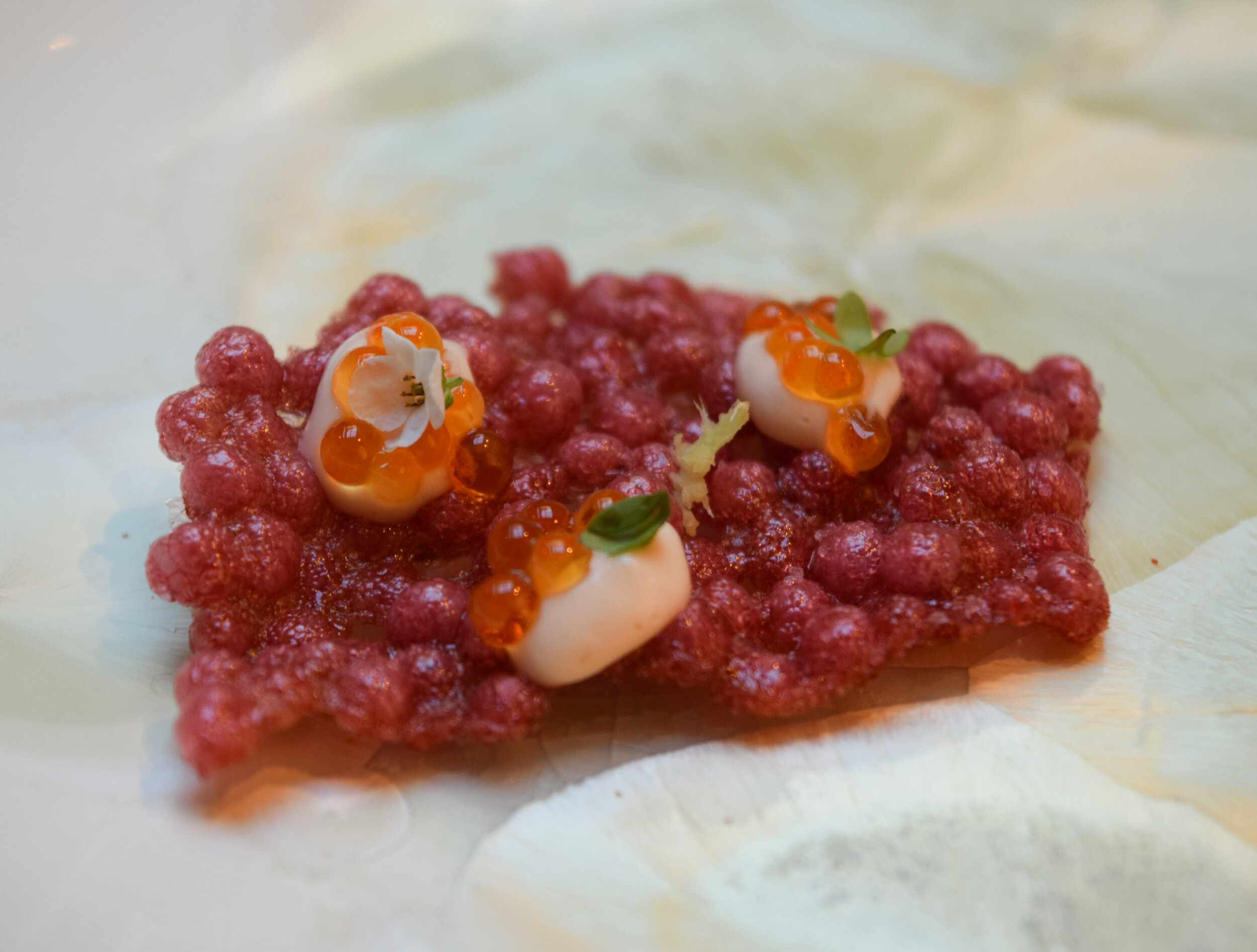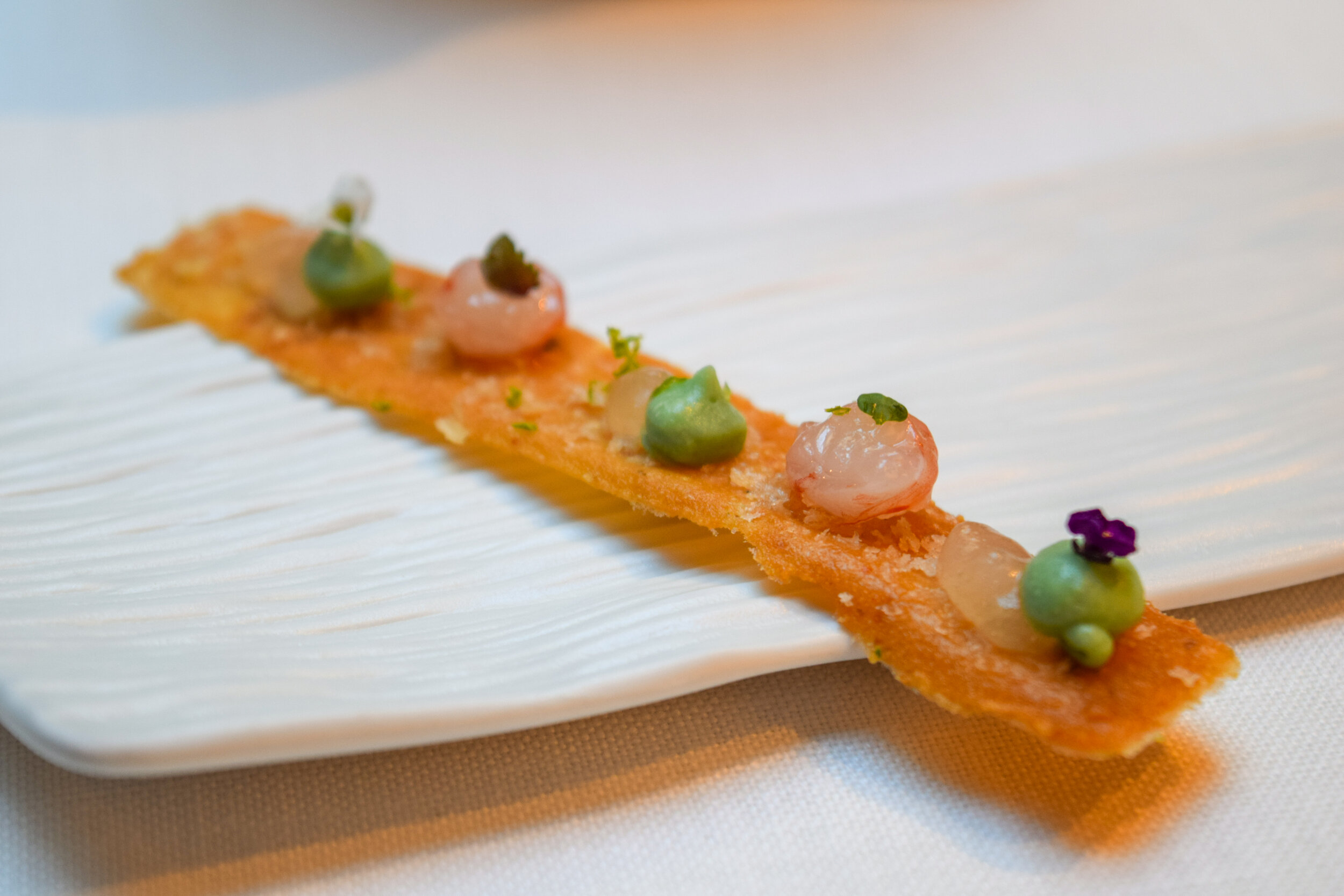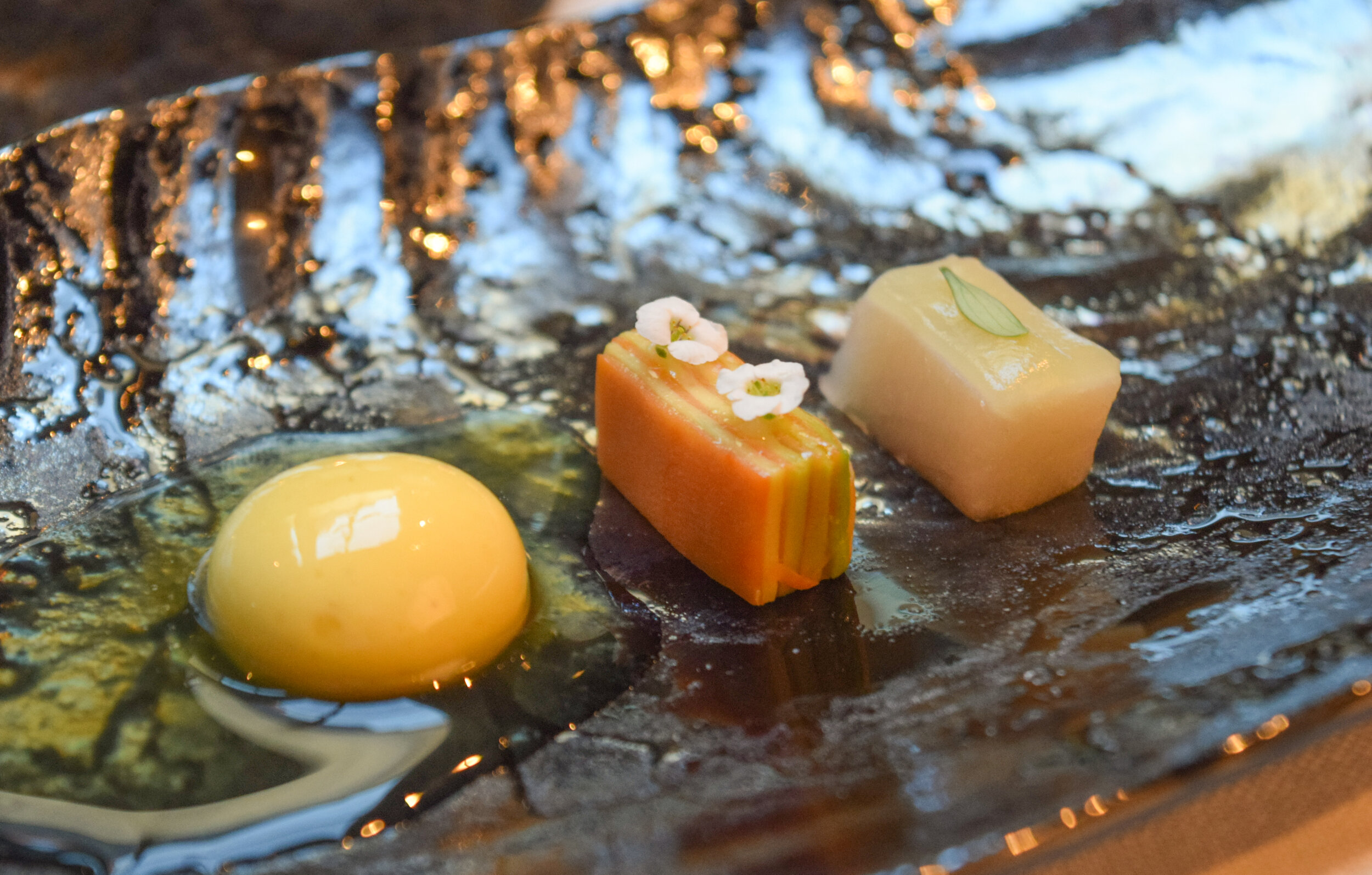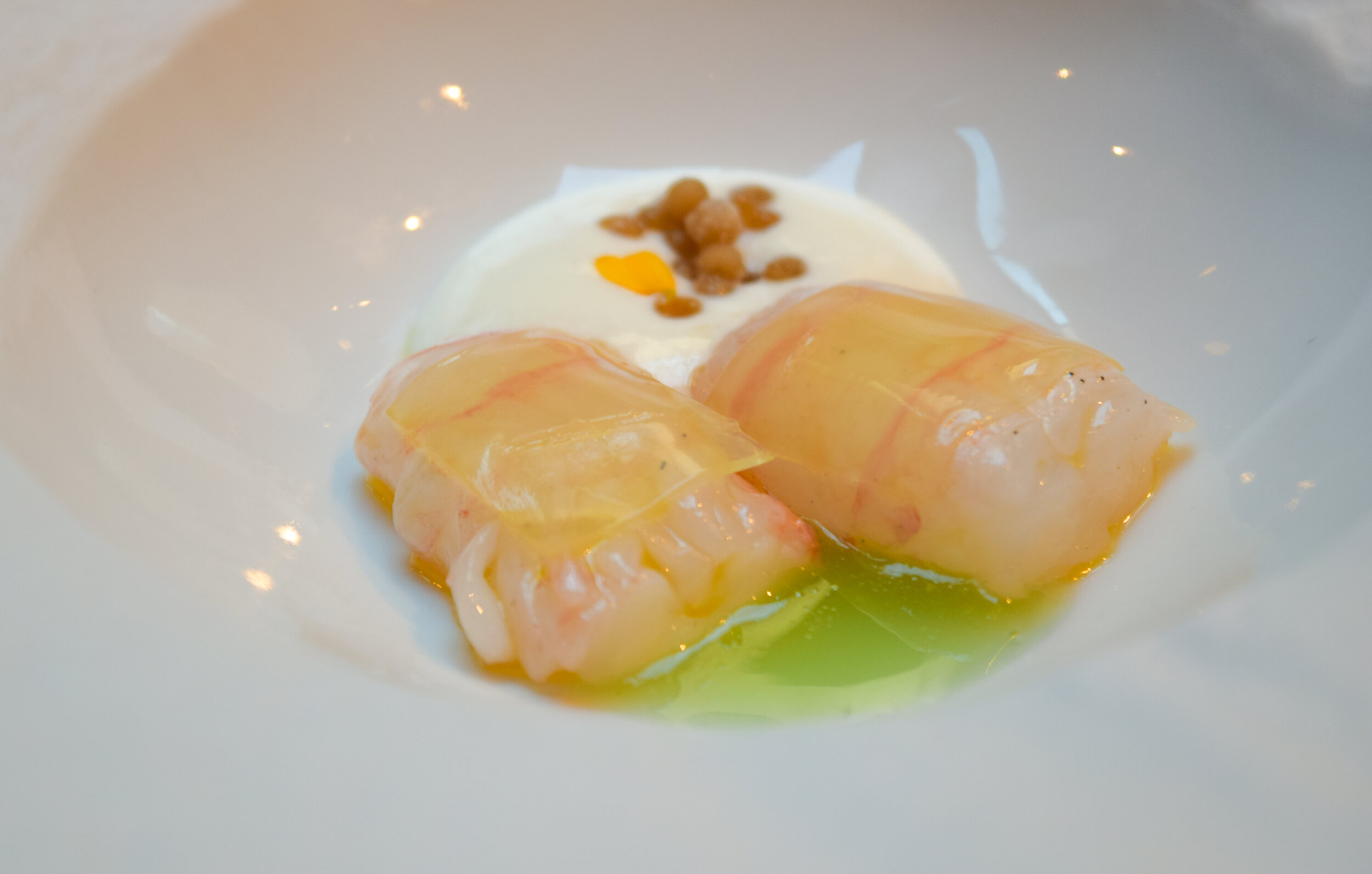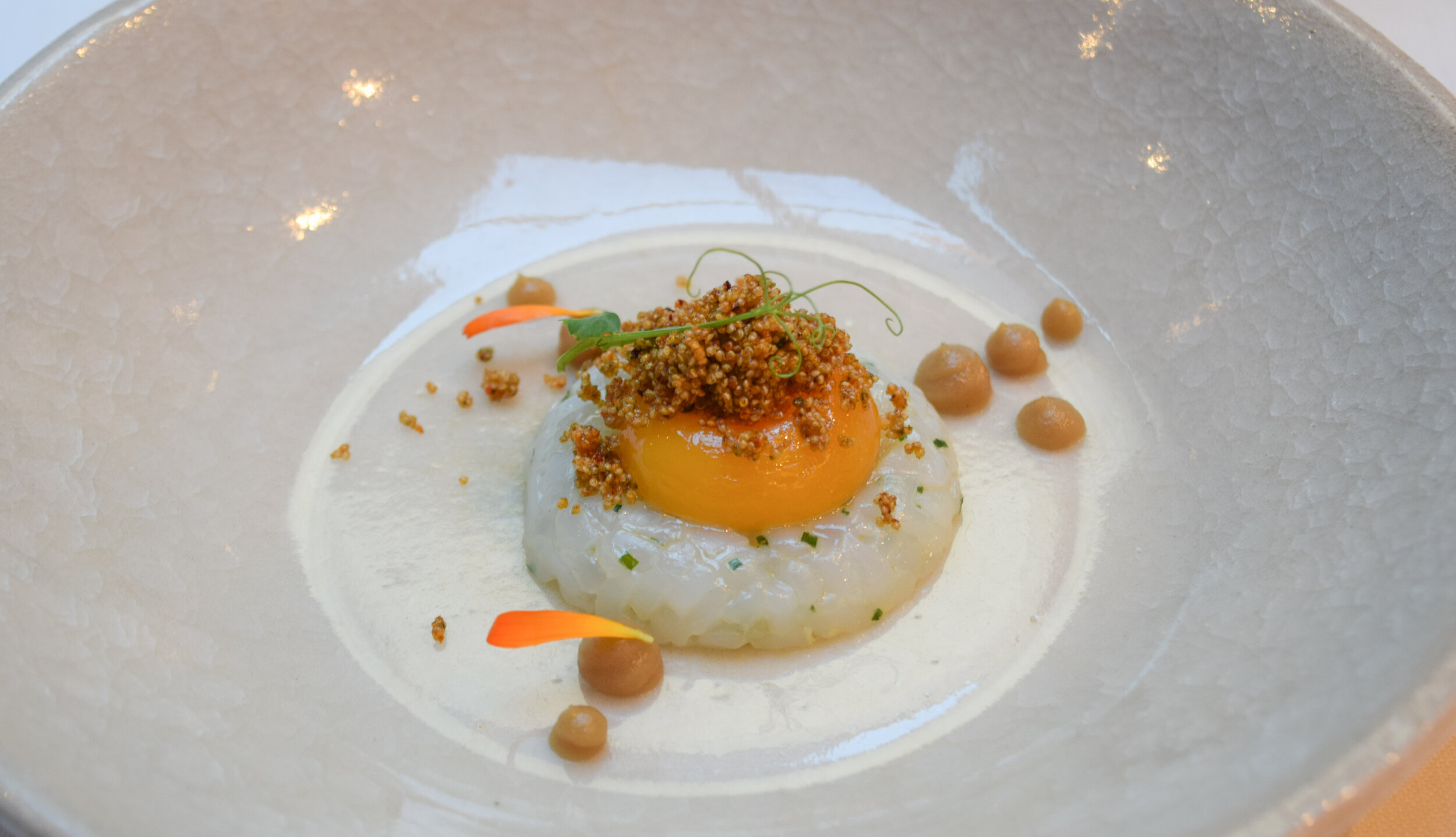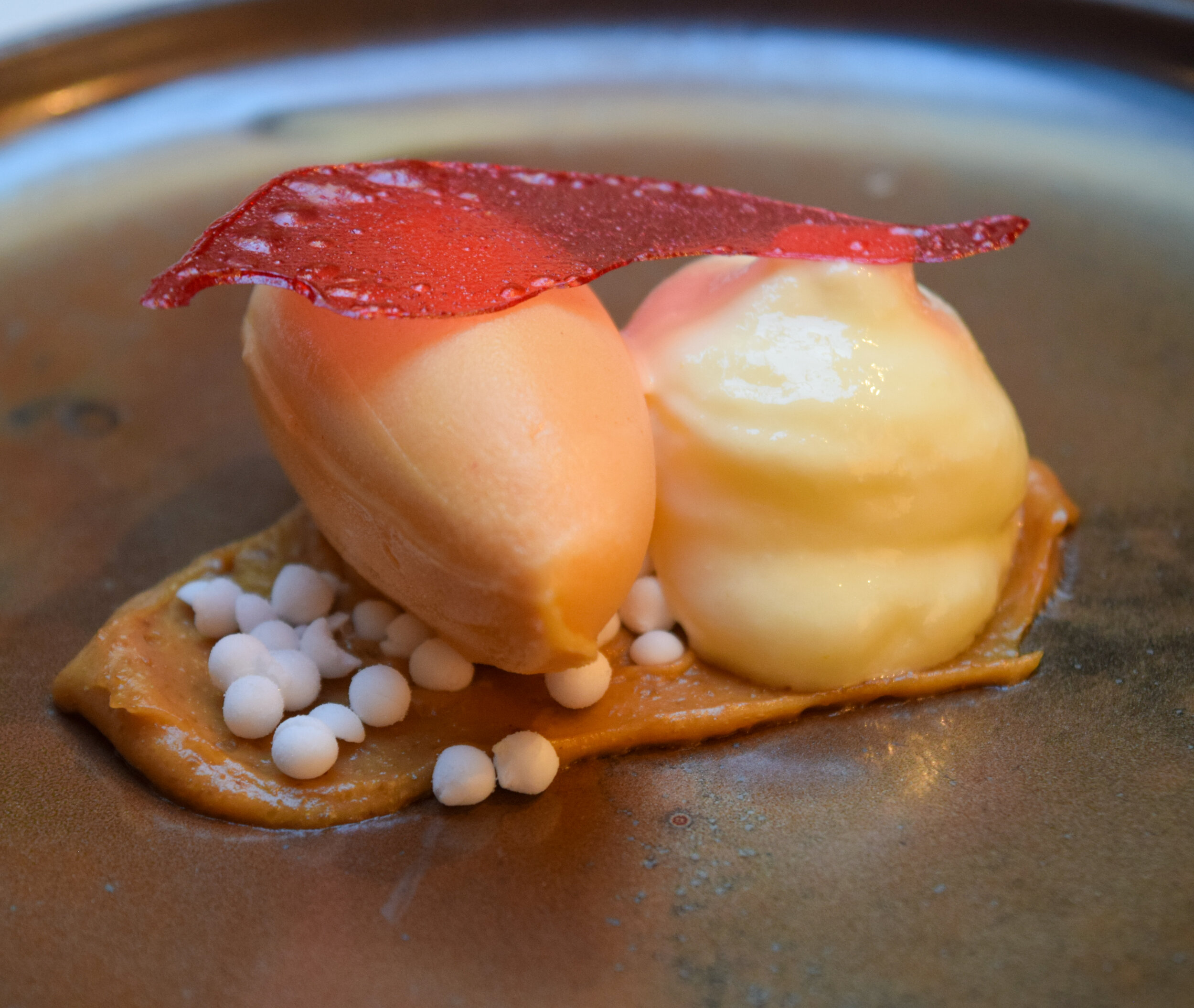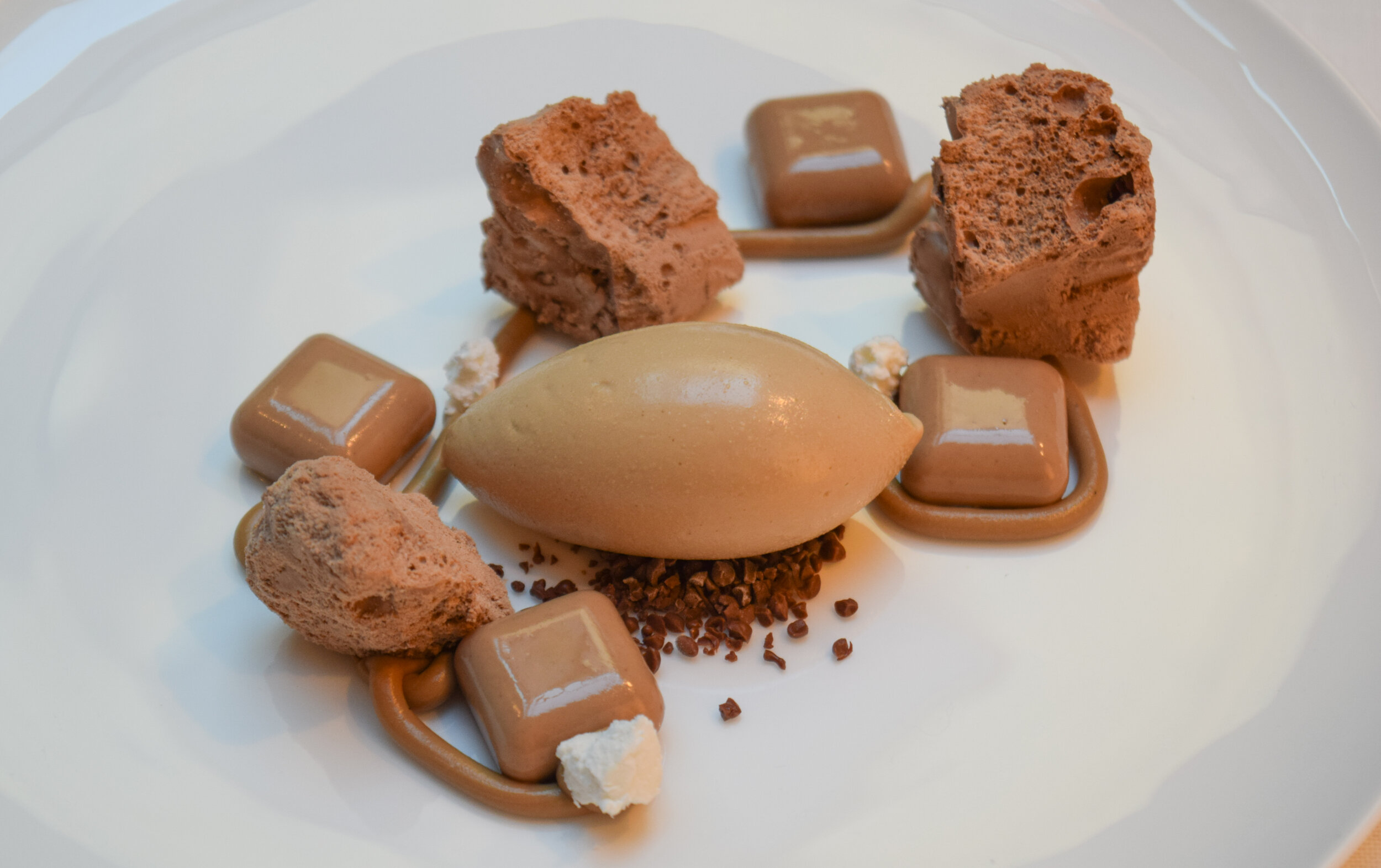Lasarte
Photo courtsey of Lasarte
Lasarte review at-a-glance
+Lots of technique and skill in the kitchen with cooking that is modern but without being too modern.
+A lengthy meal with dishes that ranged from good to great and never bad.
-Ingredient quality could have been a tad stronger, very good but not among the best.
Review Rating: 94/100
Verdict: Martín Berasategui’s food at Lasarte intrigued me. The ingredients of the tasting menu seemed almost intentionally catered to my tastes - heavy on the seafood, much of it raw and/or shellfish. The cooking was modern, featuring plenty of innovative flavors and techniques but the kitchen was careful not to veer too far off the straight narrow and avoided some of the disasters you can find in these types of kitchen. The plates were a bit busy and the ingredient quality didn’t quite sing like the best meals I’ve had but these are minor criticisms. In my book this was better than Restaurant AbAC and worthy of the three stars awarded by Micheln.
Price I paid: €235
Value: 13/20
Lasarte & Martín Berasategui background
Lasarte is the second three Michelin star restaurant of Spanish Chef Martín Berasateguia - the restaurant is actually named after the town in Basque where his eponymous restaurant first earned three stars. While today the Basque region is known for its density of Michelin star restaurants, when chef Berasategui began working at his parent’s restaurants at the age of 14 there were none. After working in his parent’s kitchen and training abroad in France, Berasateguia returned to his home region of Basque to open his eponymous restaurant in Lasarte-Oria in 1993. Success quickly came, earning the ultimate third star in 2001. Berasateguia used the success in Basque as a springboard for a mini-restaurant empire, earning three stars for his Lasarte restaurant in Barcelona as well as two stars for MB Tenerife in the Canary Islands.
Restaurant Lasarte itself opened in 2006 as the main dining attraction of the five-star Monument Hotel, only a few minutes walk from the Casa Mila and main shopping areas of Barcelona. After holding two Michelin stars for several years the restaurant earned the final third star in 2016. The dining room is classy and the service as smooth as can be. An added bonus was that meal was well-paced. This was a 12-course menu but served in just over two hours. Courses were very evenly spaced out so the two hours flew by without feeling rushed or having any awkward gaps between courses.
Lasarte offered two tasting menus when I visited - a 7-course “Lasarte” menu for €205 and an even longer 10-course menu for €235. These prices are a bargain compared to Paris and most of Europe but in-line with Spanish pricing when you consider the “Feast” menu at El Cellar De Can Roca only cost €210. While I came in planning to order the cheaper menu I ended up going with the longer one as its various courses appealed to me more.
Review of what I ate at Lasarte
The meal started off with some truly impressive nibbles. First up was a trio of crisps which from left to right included a beetroot tapioca cracker topped with beetroot puree, wasabi and caviar, a spiral Jerusalem artichoke topped with artichoke puree and chili powder, and lastly a tomato crisp topped with pieces of raw shrimp and green curry crème. All three of these nibbles were top-shelf, having great texture and interesting garnishes. The favorite of the three was the tomato crisp as the shrimp had great flavor.
Even better than the crisps was the next two amuses which included one of Martín Berasategui’s signature dishes - a millefeuille of foie gras, eel, and caramelized apple. This was tremendous, the layers having contrasting textures and both the foie gras and eel bringing their distinct flavors while the apple added a bit of balance. This was as good as any dish, much less an amuse-bouche. Last up from the nibbles was a small bowl of jalapeño cream, razor clams, liquorice ice cream, and cucumber espuma (not pictured). Again, this was fantastic, the kitchen walking a delicate balancing act on a tightrope between the heat of the jalapeño and refreshing cucumber flavor. I could not detect the liquorice but I can hardly consider that a bad thing given its assertive flavor.
The bread was served with an impressive selection of colored butter, each with different flavors. Despite the selection of butter, I preferred the excellent quality olive oil the bread was served with for dipping.
The first proper course was hardly bigger than the amuses and consisted of sweet potato, avocado, grilled corn, marinated hamachi, and coriander. This was a nice refreshing start to the meal and the kitchen did a good job of transforming each ingredient in an interesting way. If I was to complain, the dish could have used a bit more of the marinated hamachi so its flavor would have come through stronger.
The second course was a slightly marinated warm oyster with iced watercress slush, parsnip, and champagne. Again, an overall intriguing dish with good technical skills from the kitchen. In particular, the iced watercress slush provided a nice temperature contrast to the slightly warm oyster.
Next up was a nice pair of langoustines with ginger, arabica Brazillian coffee infusion, and roasted sheep milk. I would not have thought to pair coffee with a delicate shellfish like langoustines but it worked shockingly well, the bitterness of the coffee nice and restrained while providing a good counterbalance to the sweetness of the langoustines.
The seafood continued with a dish of squid tartar, liquid egg yolk, onion, and kaffir consommé. This was a very interesting dish with a great interplay of different textures. Squid texture can be hit or miss but the tartar here was nice and smooth from being cut into just the right size and went well with the thick, creamy egg yolk. The popped amaranth on top added a nice crunch to go with the smoothness of the yolk and slightly bouncy squid.
The next course was a vegetable leaf and petal salad with herbs, sprouts, lettuce cream, and lobster. This appeared to take its inspiration from the gargouillou at Bras with its many various herbs and vegetables. Unfortunately, while the dish was prettily presented, the vegetables did not have the shockingly good flavor they need to if you are serving what is essentially a salad at a three star restaurant. I also thought the dish would have been better if they used more varying techniques on the vegetables to provide more different tastes and textures.
The next dish, waygu ravioli and glazed eel, featured two of my favorite ingredients so it is hard for me to judge it with anything other than a glowing review. With that disclaimer, this was a superb dish. The kitchen showed excellent technique on the ravioli, making it appropriately thin so it melts away in your mouth to leave you with the luxurious waygu taste. The richness of the waygu and sweetness of the glazed eel could have been tiresome but the kitchen smartly served it with an iodized cream, horseradish, and caviar - the horseradish, in particular, taming the richness of the main ingredients. The main fish course (not pictured) was hake loin, coconut, red curry, and goose barnacles. I was quite surprised to find what was essentially a Thai coconut curry as a sauce in a three-star restaurant in Barcelona but it worked out ok. The hake was accurately cooked but I found its mild flavor got somewhat lost with the assertive curry. Overall, I found this less strong than the other seafood courses.
The meat course was grilled pigeon with vegetable nuances, spiced sauce, and bianca perla corn. The pigeon was well cooked but didn’t quite pack the same punch as say the pigeon at Cheval Blanc or Hans Kong Kaelder. Still, it was a very nice piece of meat and the spiced sauce complimented it nicely.
Much like the sauce with the hake, the first dessert was a surprise as it was a riff on further Thai flavors - in this case, a papaya salad. The dessert was served in two ways, one a literal papaya salad and the other a papaya sorbet paired with peanut butter. This was a refreshing, pleasing dessert but a bit out of place in Barcelona.
The main dessert was pecan nut bonbon, milk rocks, coffee, and smoked whiskey. A very technical dessert that was a fitting end to an excellent meal. Most impressive was the carefully judged whiskey ice cream. When tasted on its own the whiskey flavor was overpowering. However, when combined with the other components of the desert, it became more muted and brought just enough whiskey for the taste to be present without overpowering the other complementary flavors.

